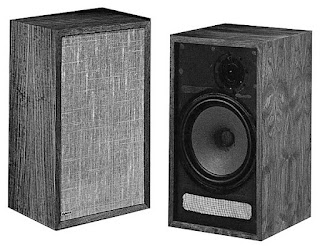Opera Fanatic's Gigli in Concert CD - a must have for opera lovers!
The CD was mastered in PCM, Gigli in Concert, available from both Amazon and The Bel Canto Society is a wonderful performance with great audio quality of one of the truly great tenors of the twentieth century. From the review by Stefan Zucker and if your only exposure to great tenors is Luciano Pavarotti you're in for a treat (Gigli was Pavarotti's father's favorite tenor):
Other tenors have had longer breath spans or greater extensions on top or bottom. But as this concert reveals, no tenor on records had as many colors on his palette as Gigli. His interpretations were more imaginative than any other Italian tenor’s, maybe with the exception of Fernando De Lucia’s. Other tenors do what they can with their voices. Gigli more or less did what he wanted.
In the 1920s and early 30s Gigli always was in voice. In the 1950s he was erratic vocally, possibly because of many health problems. As in all his late performances, during this concert you hear him clear his throat again and again, suggesting that he had sinusitis, a cold or allergies. Yet his mezza voce is undisturbed.
An oddity of the concert is that the orchestra accompanies some arias, a piano others. Hadn’t the orchestral parts arrived for some arias, or was there no time to rehearse? A Gigli collector, Steve Abrams, of London, England, suggested that the selections sung with piano are encores. In any case one can hear that the orchestra tuned to a higher A than the piano did, but the disparity caused Gigli no disorientation.
In “Dalla sua pace” the score indicates that the word “morte” should be sung with “mor-” on a middle-voice D and “te” on the G above. In all his recordings of the aria, including this one, Gigli instead attacks the G on “or” and then switches to “te,” presumably so as not to compromise the stress of the word (which should be “morte,” not “morte“). When my mother, Rosina Wolf, sang Donna Elvira in Italy in 1951, with regard to “Mi tradì” she was told not to sing “infelice” with “ce” on the attack of the A-flat but to begin the A-flat on the “i” and then introduce the “ce.” In America she was told not to do this. In Italy fidelity to the stress of the word took precedence over fidelity to the score or even to the musical intent.
In all his recordings of “Dalla sua pace,” including this one, Gigli transposes two of the low Ds an octave higher, toward the end of the piece. (Schipa does the same thing.)
Gigli sings “La donna è mobile” like no one else, playfully, with a broad spectrum of tone colors, and his treatment of the grace notes is particularly effective.
In “Che gelida manina” he sings some of the words with a chuckle in his tone. He sings “Talor dal mio forziere” heavily covered but in one breath. And then comes the B-natural. He reverts to singing “La-a-a-a speranza,” holds the B, makes a portamento to the B-flat, takes a breath–and only then introduces “speranza,” true. But the B itself is thrilling, and he sustains it. From the late 1940s onward his breath span was shorter than it had been, but he had easier access to top notes than before 1931, and his intonation was better than in the mid and late 30s.
Predictably he sings the climax to “Vesti la giubba,” “Ridi, Pagliaccio, sul tuo amore in franto!” with soul-searing passion.
In the 1925 recording of “Quann’ a femmena vo’,” there is a mismatch between the Neapolitan vocal line and the Spanish-style, dance-like accompaniment, with castanets.The conductor is Nathaniel Shilkret. (The Henry Mancini-type accompaniments to Di Stefano’s and Corelli’s recordings of Neapolitan songs are still more distracting.)
I cannot imagine a better piano accompanist than the one for the live concert, Enrico Sivieri. He knows when to follow, when to take the lead. Never does he straitjacket Gigli. And as a pianist he knows how to subordinate harmonic filler to melodic or harmonic content.
—Stefan Zucker
—Stefan Zucker



Comments
Post a Comment